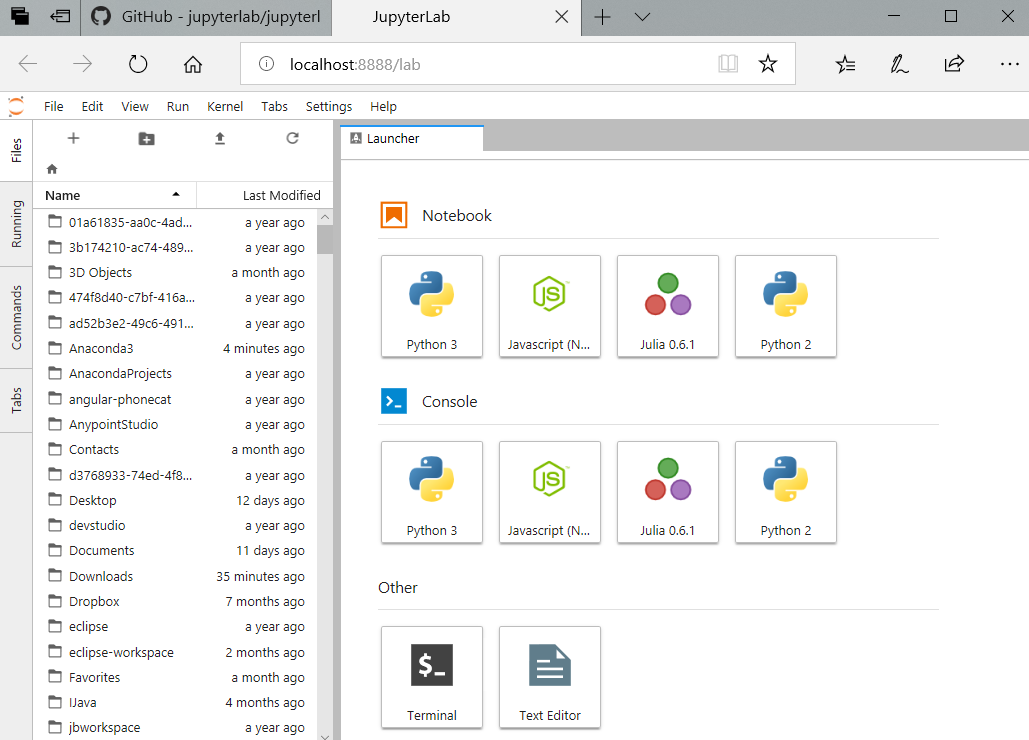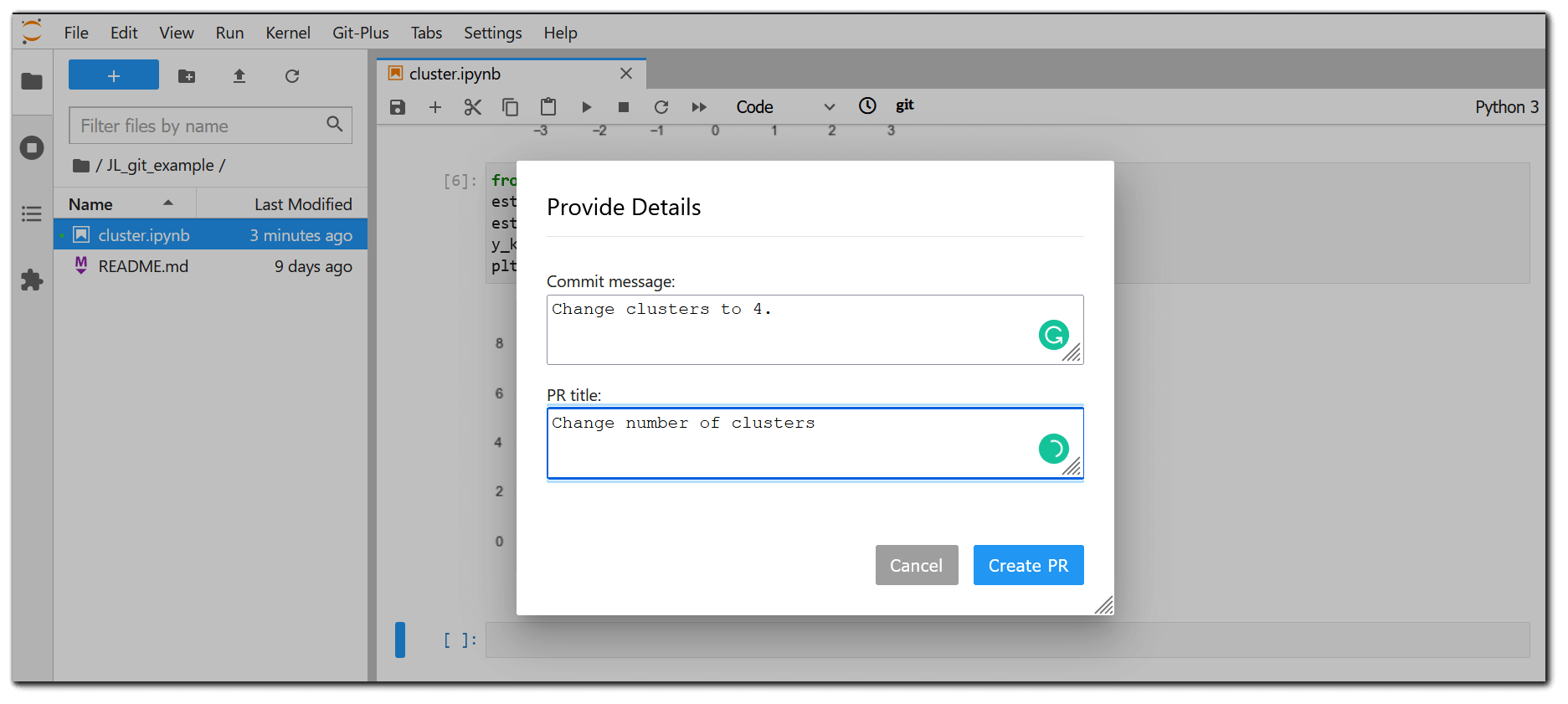
- #Get full jupyterlab extensions offline how to
- #Get full jupyterlab extensions offline install
- #Get full jupyterlab extensions offline update
- #Get full jupyterlab extensions offline for android
- #Get full jupyterlab extensions offline download
#Get full jupyterlab extensions offline install
Install Python and Jupyter using the Anaconda Distribution, which includes Python, the Jupyter Notebook, and other commonly used packages for scientific computing and data science.
#Get full jupyterlab extensions offline for android
#Get full jupyterlab extensions offline how to
How to create a COVID-19 Tracker Android App.How to create a COVID19 Data Representation GUI?.Scraping Covid-19 statistics using BeautifulSoup.Implementing Web Scraping in Python with BeautifulSoup.Downloading files from web using Python.Create GUI for Downloading Youtube Video using Python.
#Get full jupyterlab extensions offline download
Pytube | Python library to download youtube videos.


#Get full jupyterlab extensions offline update
*/ readonly summary : HTMLParagraphElement /** * Handle update requests for the widget. */ readonly img : HTMLImageElement /** * The summary text element associated with the widget. To the command palette interface and the JupyterFrontEnd instance.Ĭonst plugin : JupyterFrontEndPlugin = /** * The image element associated with the widget. Change the import at the top of the file to get a reference Random Astronomy Picture command to the palette and get it to show an Astronomy Pictureįire up your favorite text editor and open the src/index.ts file in yourĮxtension project. For your first addition, you’re going to add a The command palette is the primary view of all commands available to Add an Astronomy Picture of the Day widget # Show an empty panel # JupyterLab to see the effects of changes below. Note: Leave the terminal running the jupyter lab command open and running If not, go back make sure you didn’t miss a step, and reach If you do, congratulations, you’re ready to start modifying the extension!

JupyterLab extension jupyterlab_apod is activated! in the console. In that browser window, open the JavaScript consoleīy following the instructions for your browser:Īfter you reload the page with the console open, you should see a message that says It’s a best practice to leave the root conda environment (i.e., the environment createdīy the miniconda installer) untouched and install your project-specificĭependencies in a named conda environment. Take snapshots of your work as you progress through this tutorial Git, a version control system you’ll use to The installation is checked by listing the installed extension and running JupyterLab with the helper python -m jupyterlab.browsercheck Integration test: Those tests are emulating user action in JupyterLab to check the extension is behaving as expected. NodeJS, the JavaScript runtime you’ll use toĬompile the web assets (e.g., TypeScript, CSS) for your extension You’ll use to bootstrap your extension project structure (this is a Python tool Next create a conda environment that includes: Here we go! Set up a development environment # Install conda using miniconda #Ĭonda’s installation documentation. The completed extension, showing the Astronomy Picture of the Day for. How to release your extension for others to enjoy How to version control your work with git How to iteratively code, build, and load your extension in JupyterLab (You’ll need to modify the commands slightly if you are on Windows.) How to set up an extension development environment from scratch on a

Shows the image and metadata in a tab panelīy working through this tutorial, you’ll learn: This pageĭescribes how to create one type of extension, an application plugin,Īdds a “Random Astronomy Picture” command to theįetches the image and metadata when activated JupyterLab extensions add features to the user experience.


 0 kommentar(er)
0 kommentar(er)
